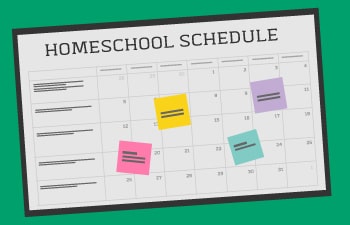Is your high schooler going to be taking the SAT test later this spring or in the fall? If so, you (and your student) may be feeling a little overwhelmed by the idea of such a high-stakes assessment. This post will break down some of the key things you need to know about SAT test prep this year as well as a list of the SAT prep courses available on Time4Learning to get your student ready for the exams!
Colleges and SAT Scores
The SAT exam scores students on a scale of 200 to 800 points per math and language arts subscores and between 400 and 1,600 for the overall score. Knowing those ranges would seem to make it easy to know what score to shoot for on the test, but the truth is that colleges have widely varying guidelines for what constitutes a “good” score. Acceptable scores at individual colleges can depend on a student’s socioeconomic background and even their prospective major. It is pretty much a given, though, that if a student scores a 1,500 or better on their SAT, he or she is likely to be accepted to most any college in the U.S.
Understanding the SAT Content
There are two types of SAT tests — the overall reasoning test and individual subject tests. The main SAT test is designed to gauge general ability in: Critical Reading and Writing and Math. There is an optional essay test, as well. Within the math portion of the test is a calculator-assisted section and a section where no calculator is allowed to be used. Each major section is divided into three parts with 10 sub-sections. The test is timed and will last approximately four hours with breaks. The student is not penalized for guessing, since scoring is based only on correctly answered questions.
In addition to the reasoning test, the SAT offers multiple subject-specific tests designed to improve a student’s credentials when applying to specific colleges. Most colleges do not require these tests, but students may opt to take them to showcase their strengths. Individual subject tests are available in literature, mathematics, specific sciences, U.S. or world history, and in individual foreign languages.
View the Time4Learning high school curriculum page to see a list of online courses that will help students prepare for both the reasoning and subject-specific SAT tests.
The upcoming testing dates for the SAT can be found on the College Board website. Be sure to get your application in as early as possible in case there are any issues that need to be resolved (especially if you are mailing your registration items). Also, it’s important to note that if you are taking subject-specific tests, not all of them are available at every test date.
Tips for SAT Test Prep
Once you understand what the SAT consists of, and your timeline for when it’s coming up on the calendar, it’s time to start preparing for the exam. Here are our top tips for heading into test day calm, collected, and well-equipped for this important college rite of passage.
- Start prepping as soon as possible. The SAT is not something you want to put off planning for until the last minute, so sign up with an SAT practice group or line up your SAT tutoring as far in advance as you can.
- Have a math strategy in place. If math isn’t your student’s strong suit, then absolutely, positively consider a dedicated math SAT study guide, and if possible, locate a local study group that your teen can work with up until test time.
- Focus on essay practice. Although the writing portion of the SAT is not a hard and fast requirement for most college admissions, to be able to show that your college-bound teen has strong potential success, a good writing score is influential.
- Take SAT practice tests. The official SAT Study Guide put out by the College Board includes 10 full length practice tests, so be sure to obtain a copy of that.
- Take it easy the week before the test. So many students go into the test a bundle of nerves. This is definitely a hindrance to optimizing their score. If your student follows the suggestions above and begins preparing as far in advance as possible, then taking the actual test should feel like second nature.
How soon can you take SAT?
When your teenager begins their freshman year of high school, the prospect of college feels a long way off. But really, a college prep curriculum in high school is designed to get every student ready for higher education. In fact, parents and students who begin planning for college in the freshman and sophomore years of college will find themselves much less stressed as graduation day nears.
This is also true in regards to the SAT test. Students should try to take their first SAT test at least one year before your first college admission deadline, and of course that means that this should occur sometime in the later part of your junior year of high school. Since much of the math content of the test is aligned with algebra and geometry, that means that those courses should be pushed as early into the high school course load as possible.
The PSAT is an excellent preparation for the SAT test, so be sure to schedule a sitting for that test early in the junior year, followed by the SAT later on that year. Then, if your student isn’t satisfied with their score, they’ll have time to do some intensive SAT preparation over the summer and retake the test at least once in the first half of the senior year. The College Board now has a program called “Score Choice” that allows students to send only the scores that they want to colleges, so if they take the test multiple times, they can choose to send only their best scores if they wish.
The SAT is pivotal for students who want to get into the college of their choice. By setting up the groundwork early enough, however, your child can head confidently into the exam. We wish them incredible success with their upcoming SAT tests!







